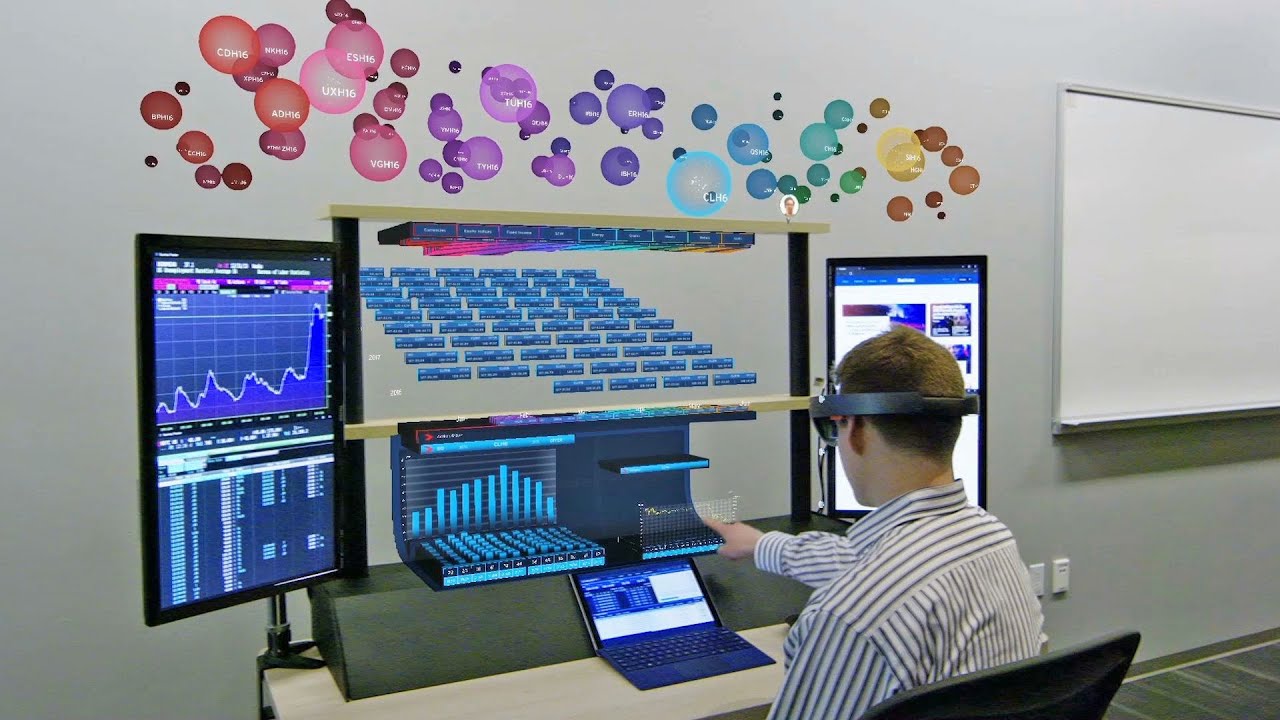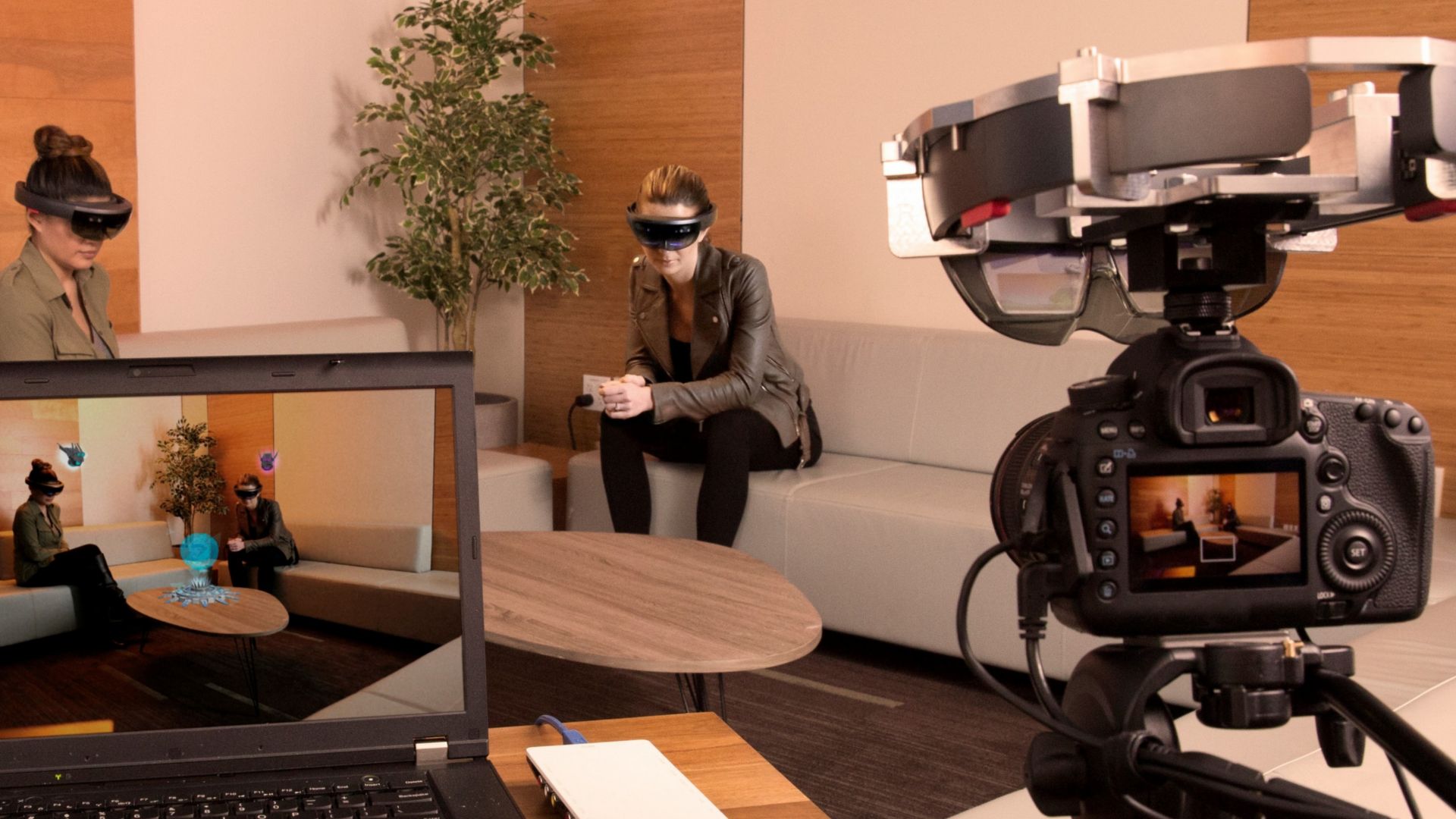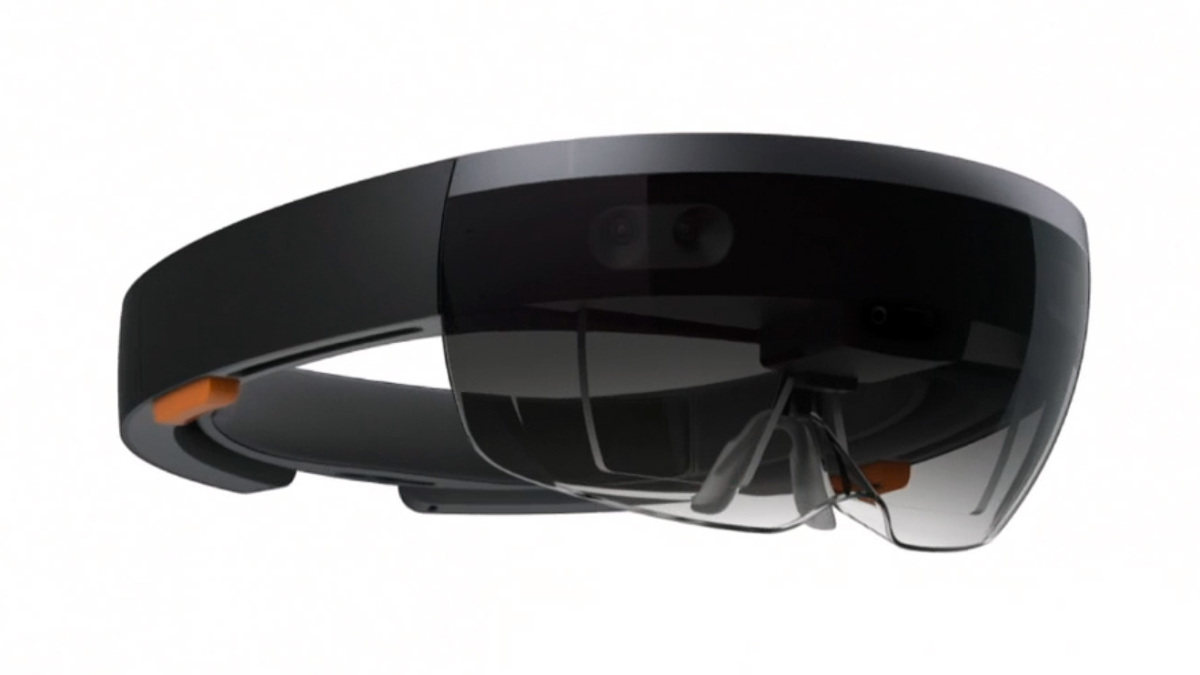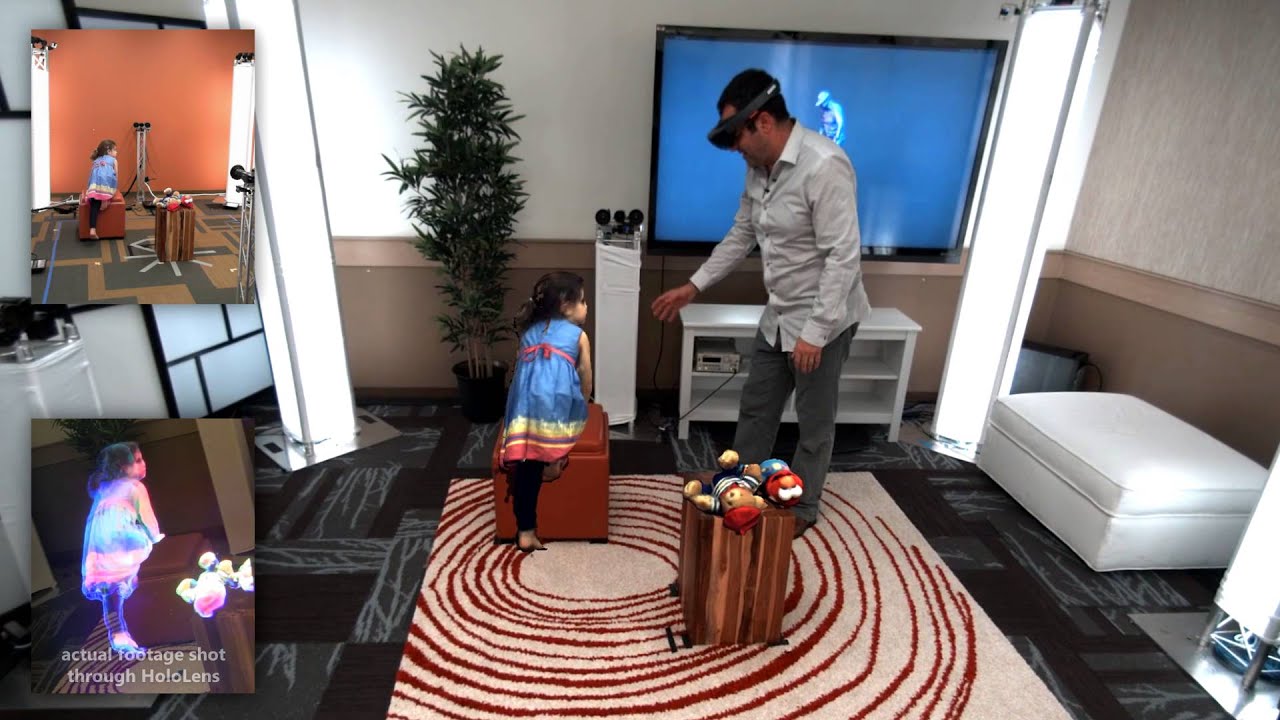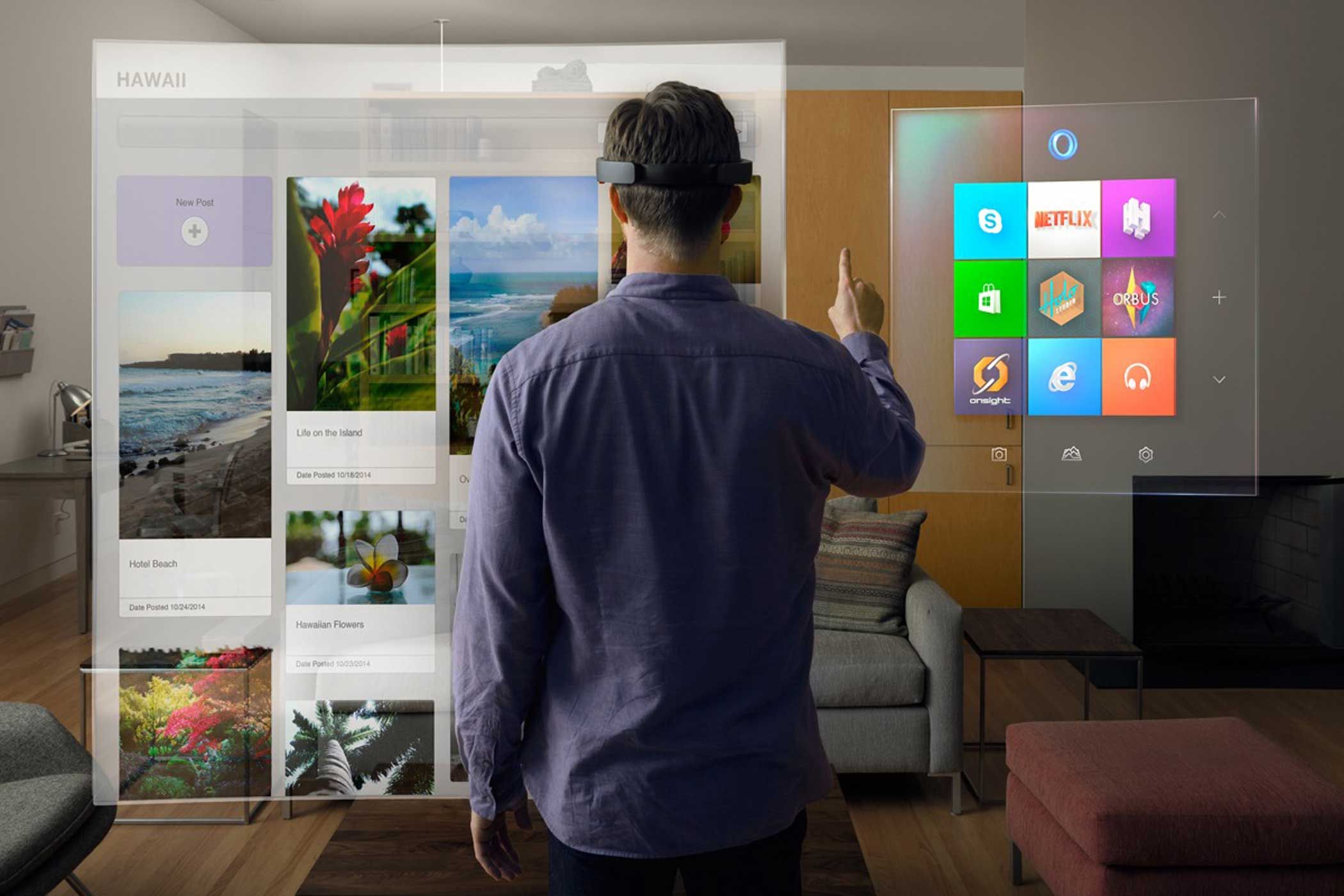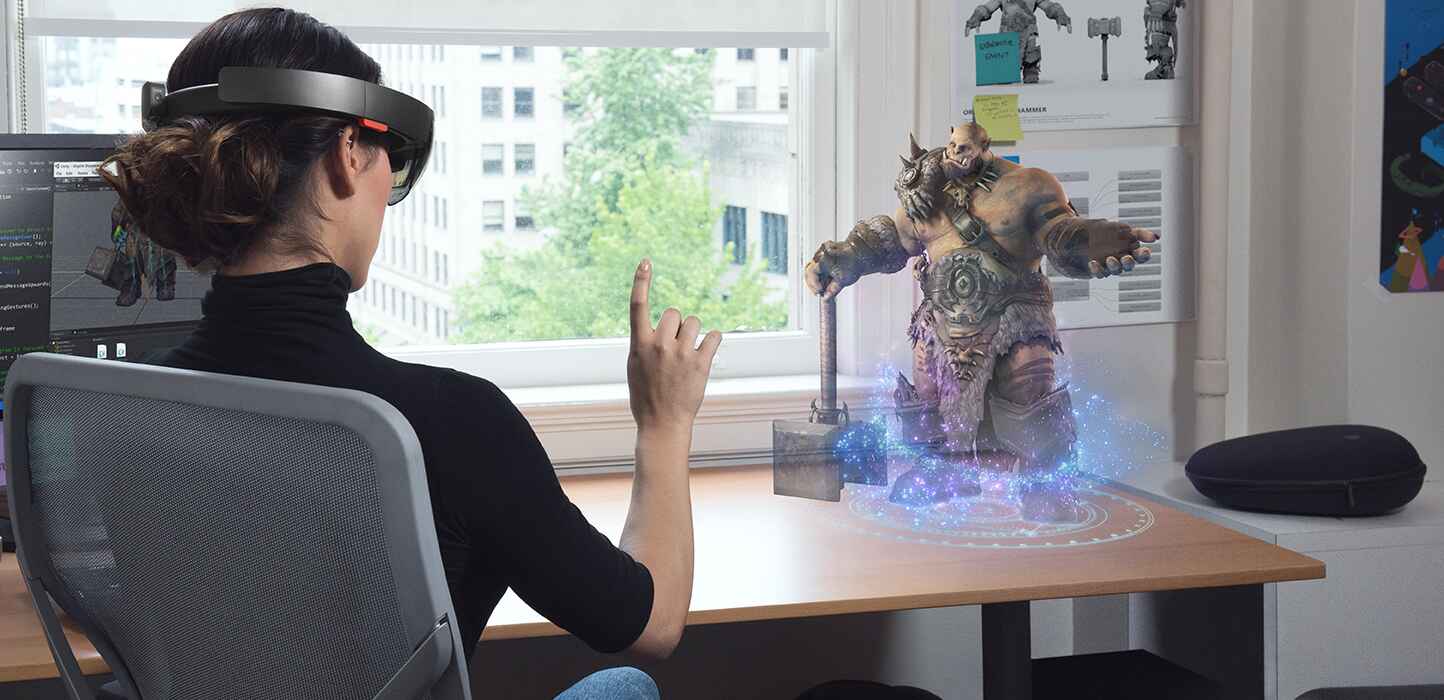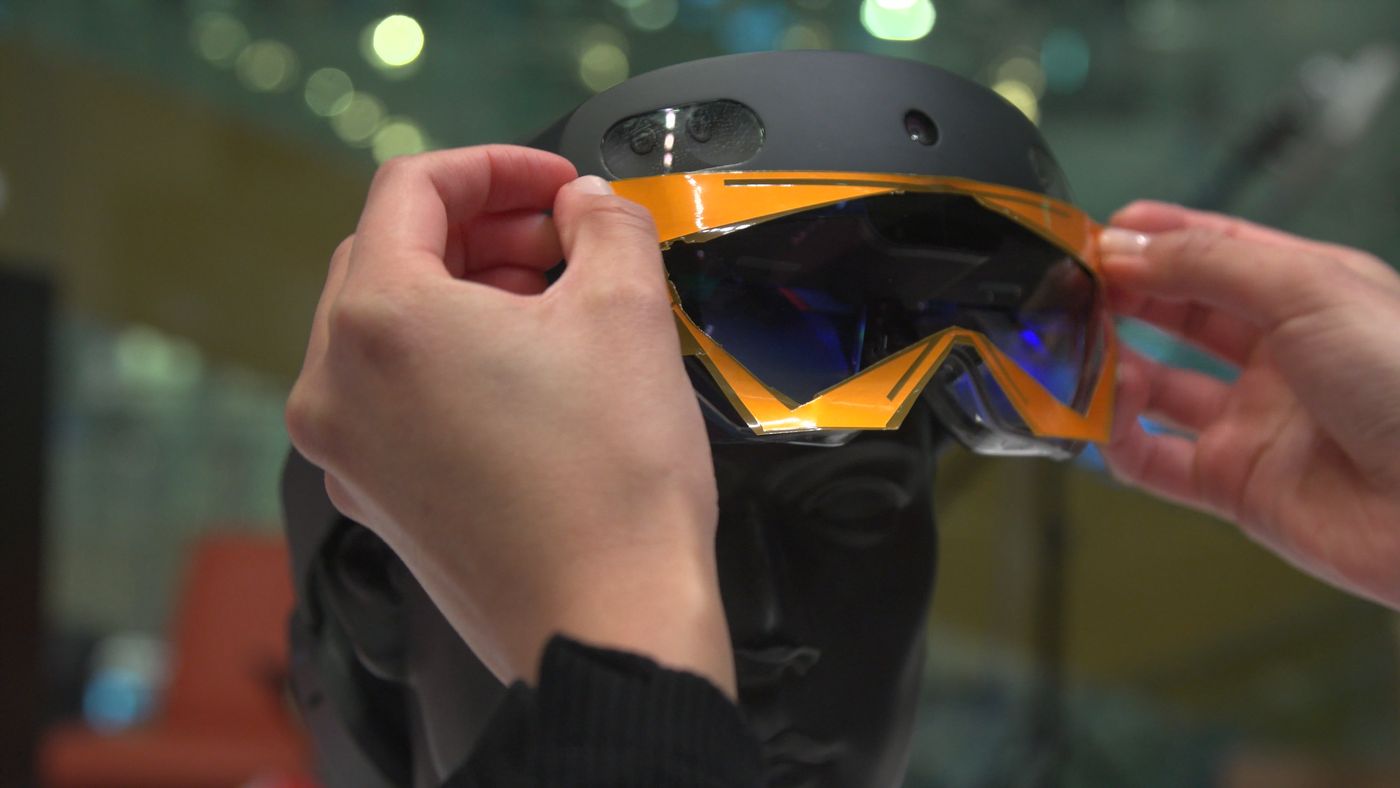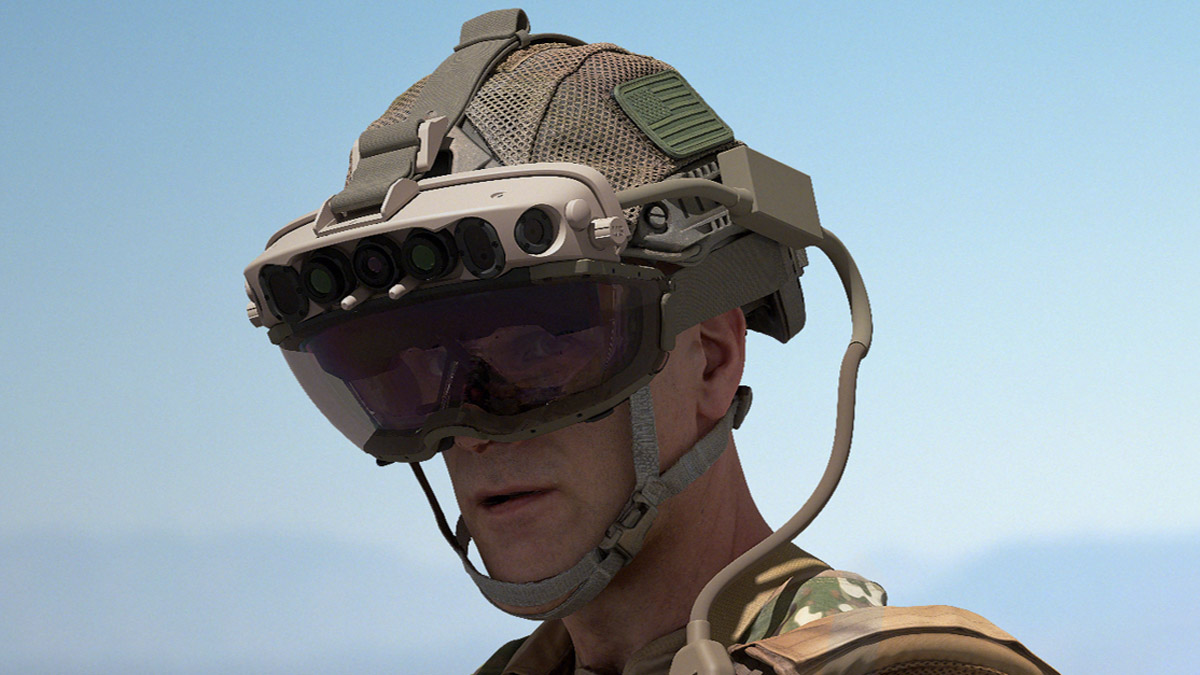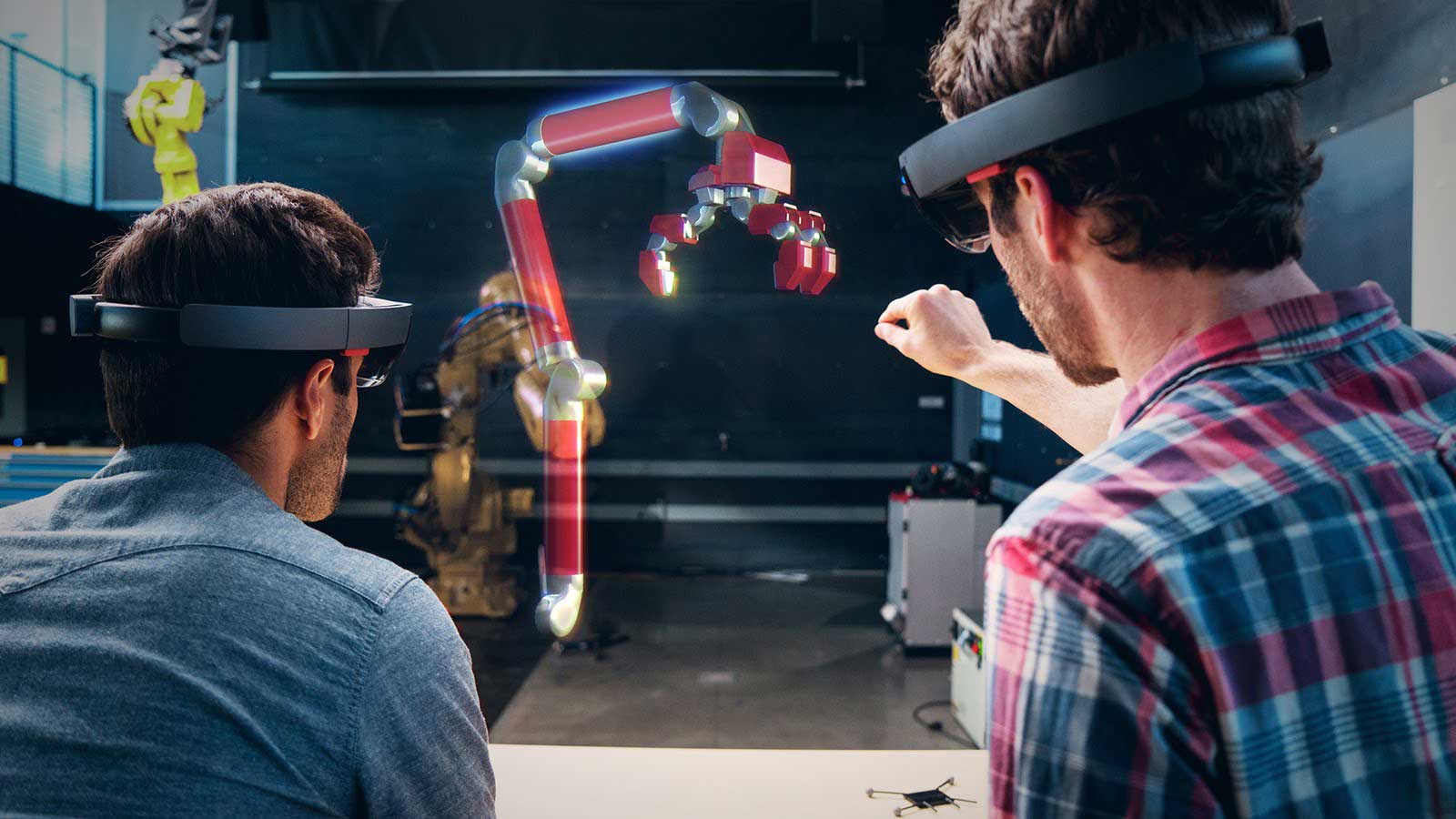Introduction
The HoloLens is a cutting-edge mixed reality device developed by Microsoft. It allows users to interact with virtual and augmented reality elements, creating a truly immersive experience. While the HoloLens is primarily designed to be worn on the head, there may be situations where you would like to display the holograms it generates on a monitor. This can be particularly useful for sharing your holographic experiences with others or for situations where wearing the device is not feasible.
In this article, we will explore how to display HoloLens holograms on a monitor. We will discuss the benefits of using a monitor to view holograms, the steps involved in setting up your HoloLens for monitor display, and how to troubleshoot common issues that may arise during the process.
By following these guidelines, you will be able to showcase your HoloLens holograms on a larger screen, opening up new possibilities for collaboration, training, and entertainment.
What is HoloLens?
HoloLens is a state-of-the-art, wearable device created by Microsoft that brings mixed reality experiences to life. It combines virtual reality and augmented reality, enabling users to interact with 3D holographic images in their real-world environment. Unlike traditional virtual reality headsets that completely immerse users in a simulated environment, HoloLens overlays digital content onto the real world, blending the physical and virtual realms seamlessly.
The HoloLens device utilizes a variety of sensors, including cameras, depth sensors, and motion trackers, to accurately track the wearer’s movements and position holograms within the environment. This allows for a truly interactive and immersive experience, where users can reach out, touch, and manipulate virtual objects as if they were right in front of them.
With built-in spatial sound, HoloLens provides an auditory experience that matches the visual elements. This means that as users move around and interact with holograms, they will also hear sound coming from the appropriate direction in the virtual space.
HoloLens has revolutionized various industries, including gaming, design, education, healthcare, and more. Its ability to blend the digital and physical worlds opens up countless possibilities for innovative applications and experiences. From designing prototypes to training medical professionals, the HoloLens is pushing the boundaries of what is possible in mixed reality.
Whether you are a developer creating new experiences, a professional seeking new ways to visualize data, or an enthusiast looking for cutting-edge technology, the HoloLens offers a unique and captivating mixed reality experience unlike any other device on the market.
The Benefits of Displaying HoloLens Holograms on a Monitor
While wearing the HoloLens headset provides an immersive and personal experience, there are several benefits to displaying HoloLens holograms on a monitor:
- Improved visibility: By connecting your HoloLens to a larger monitor, you can enhance the visibility of holograms and ensure that everyone in the room can clearly see and interact with them. This is particularly beneficial in scenarios where multiple people need to view and collaborate on the holographic content simultaneously.
- Enhanced collaboration: Displaying HoloLens holograms on a monitor opens up opportunities for collaboration within a group. You can share your holographic experiences with colleagues, clients, or friends, allowing them to provide feedback, make annotations, or participate in the experience together. This fosters a collaborative environment and enhances the overall engagement of the participants.
- Accessibility: Not everyone may have access to a HoloLens device, but by displaying holograms on a monitor, you can make mixed reality experiences accessible to a wider audience. This is particularly valuable in educational settings where teachers can showcase immersive content to students, or in public demonstrations where anyone can experience the holograms without the need for a personal headset.
- Comfort and convenience: Wearing the HoloLens headset for extended periods of time may not be practical or comfortable in certain situations. By connecting the device to a monitor, you can still enjoy the benefits of mixed reality without the need to wear the headset. This is ideal for longer presentations, training sessions, or any situation where wearing the device may cause discomfort or fatigue.
Whether you are presenting to a large audience, collaborating with a team, or simply looking for a more convenient way to experience HoloLens holograms, displaying them on a monitor offers numerous advantages. By leveraging the power of HoloLens and combining it with the visual capabilities of a monitor, you can unlock new possibilities for sharing, collaborating, and exploring the mixed reality world.
Setting Up Your HoloLens for Display on a Monitor
Before you can display HoloLens holograms on a monitor, you will need to ensure that your device is properly set up. Here are the steps to follow:
- Connect your HoloLens to a power source: Make sure your HoloLens device is adequately charged or connected to a power source. Displaying holograms on a monitor can be more power-intensive, so ensuring a stable power supply is essential.
- Enable the Developer Mode: To enable the necessary developer options for connecting to a monitor, you will need to enable Developer Mode on your HoloLens. To do this, navigate to the Settings app on your device, select “Update & Security,” and then choose “For developers.” From there, enable Developer mode.
- Install necessary software: On your PC or laptop, make sure to install the Windows Device Portal and the HoloLens emulator. You can find these tools on the Windows Dev Center website. These tools will allow you to connect to your HoloLens device from your computer.
- Connect your HoloLens to your PC: Ensure that your HoloLens and your PC are connected to the same network. Open the Windows Device Portal on your PC and navigate to the “System” tab. From there, select “Connect” and follow the instructions to establish a connection between your HoloLens and your PC.
- Configure the HoloLens settings: Once the connection is established, you will be able to access the HoloLens settings through the Windows Device Portal. In the settings, navigate to the “Mixed Reality Capture” section. Here, you can adjust various options such as resolution and frame rate to optimize the display on the monitor.
With these preparations in place, your HoloLens is now ready to be connected to a monitor for displaying holograms. The next step is to physically connect the HoloLens to the monitor and adjust the display settings to ensure a smooth and immersive experience, which we will discuss in the following sections.
Connecting Your HoloLens to a Monitor
In order to display HoloLens holograms on a monitor, you will need to establish a physical connection between your device and the monitor. Follow these steps to connect your HoloLens to a monitor:
- Check the available ports: Identify the available ports on your HoloLens device and the monitor. Common ports include HDMI, DisplayPort, and USB-C. Make sure that both your HoloLens and the monitor have compatible ports for connecting.
- Choose the appropriate cable: Select a cable that matches the ports on both your HoloLens and the monitor. For example, if both devices have HDMI ports, you will need an HDMI cable to connect them. If you are unsure about the cables or adapters you need, consult the user manuals or reach out to the manufacturer for guidance.
- Connect the cable: Insert one end of the cable into the corresponding port on your HoloLens and the other end into the matching port on the monitor. Ensure that the cable is securely connected to both devices to prevent any signal loss or interruptions.
- Configure the monitor: Once the physical connection is established, turn on your monitor and select the correct input source. Most monitors allow you to switch between different inputs, such as HDMI or DisplayPort. Use the menu buttons on your monitor to select the appropriate input source that corresponds to the port you connected the HoloLens to.
Once the connection is established and the monitor is set up, you should see the HoloLens holograms displayed on the monitor. If you don’t see any content on the monitor, make sure that the monitor is properly configured and the cable is securely connected. You can also try restarting both the HoloLens and the monitor to resolve any potential connectivity issues.
Now that you have successfully connected your HoloLens to a monitor, let’s move on to adjusting the HoloLens display settings to ensure optimal viewing on the monitor.
Adjusting HoloLens Display Settings for Monitor Viewing
After connecting your HoloLens to a monitor, it is important to ensure that the display settings are properly adjusted for optimal viewing. Follow these steps to adjust the HoloLens display settings:
- Access the HoloLens settings: Tap on the Start button on your HoloLens, and then select the “Settings” app. Alternatively, you can use voice commands by saying “Hey Cortana, open settings.”
- Navigate to the display settings: Within the “Settings” app, scroll down and select the “System” option. Next, tap on “Display” to access the display settings for your HoloLens.
- Adjust the resolution and size: In the display settings, you can modify the resolution and size of the holograms that will be displayed on the monitor. Adjust these settings according to your preference and the capabilities of your monitor. Increasing the resolution can enhance the clarity of the holograms, while adjusting the size can make them more visible on the monitor.
- Optimize for performance: Depending on the performance capabilities of your HoloLens and the connected monitor, you may need to make adjustments to optimize performance. Consider reducing the frame rate or disabling certain visual effects if you encounter any lag or performance issues. Experiment with different settings until you find the optimal balance between visual quality and performance.
- Save and apply the changes: Once you have adjusted the display settings to your liking, tap on the “Apply” or “Save” button to save the changes. The new display settings will now be applied and reflected when viewing holograms on the connected monitor.
By adjusting the HoloLens display settings, you can ensure that the holograms are displayed on the monitor in the most suitable way, taking into consideration the resolution, size, and performance factors. These settings can be customized based on your personal preferences and the capabilities of the monitor you are using.
Now that you have successfully adjusted the HoloLens display settings, you are ready to share and explore the holographic content on the connected monitor. In the next section, we will discuss how to easily share your HoloLens holograms with others.
Sharing HoloLens Holograms on a Monitor
One of the significant advantages of displaying HoloLens holograms on a monitor is the ability to easily share the experience with others. Here are some methods to share your HoloLens holograms on a monitor:
- Screen mirroring: Many PCs and laptops have built-in screen mirroring capabilities. You can use screen mirroring to display the HoloLens holograms on a larger screen, such as a monitor or TV. Simply enable screen mirroring on your PC or laptop, and your HoloLens holograms will be mirrored in real-time on the monitor, allowing everyone in the room to see the virtual content.
- Wireless display adapter: If your monitor or TV supports wireless display technology, you can use a wireless display adapter to connect your HoloLens wirelessly. Simply plug the wireless display adapter into the HDMI port of your monitor or TV, and follow the instructions to connect your HoloLens to the wireless display adapter. This will allow you to share your holograms without the need for any physical cables.
- Video capture card: If you need to record or stream your HoloLens holograms, you can use a video capture card. Connect the video capture card to your HoloLens and to the monitor or PC. The video capture card will capture the HoloLens display and allow you to record or stream it on the monitor or share it online.
- Remote desktop: Another way to share your HoloLens holograms on a monitor is by using remote desktop technology. With remote desktop, you can connect to your HoloLens from another computer or device and view the holograms on the monitor of that device. This enables you to share the experience with someone in a different location or control the HoloLens remotely.
Each of these methods offers a convenient way to share your HoloLens holograms on a monitor, allowing others to experience and interact with the virtual content. Choose the method that best suits your needs, taking into consideration the available hardware and the level of convenience you require.
With the ability to easily share your HoloLens holograms on a monitor, you can collaborate, present, or entertain with a wider audience, making the most of the mixed reality experience.
Troubleshooting Common Issues
While displaying HoloLens holograms on a monitor is a straightforward process, you may encounter some common issues along the way. Here are a few troubleshooting tips to help resolve these issues:
- No signal on the monitor: If you don’t see any content on the monitor after connecting your HoloLens, ensure that the monitor is powered on and set to the correct input source. Double-check the cable connections to ensure they are secure. You may also try restarting both your HoloLens and the monitor to refresh the connection.
- Display resolution issues: If the holograms appear distorted or stretched on the monitor, check the display resolution settings on both the HoloLens and the monitor. Make sure they are set to compatible resolutions. Adjust the display settings on the HoloLens to match the native resolution of the monitor for optimal display quality.
- Performance issues: If you experience lag or performance issues when displaying HoloLens holograms on a monitor, consider adjusting the display settings on the HoloLens to optimize performance. Reduce the frame rate or disable certain effects to improve performance. Additionally, make sure that both your HoloLens and the connected monitor meet the minimum system requirements.
- Audio output concerns: If you are not hearing audio from the holograms displayed on the monitor, ensure that the audio output on the HoloLens is set to the correct device. You can check and adjust the audio settings on the HoloLens to route the sound to the desired output device, such as the monitor’s built-in speakers or external speakers connected to the monitor.
If you encounter any other issues or have difficulty troubleshooting, you may need to consult the user manual of your HoloLens device or contact the manufacturer’s support for further assistance. They can provide specific troubleshooting steps or address any hardware-related concerns.
By following these troubleshooting tips, you can quickly address common issues that may arise during the process of displaying HoloLens holograms on a monitor. This ensures a smooth and enjoyable experience for both you and anyone with whom you are sharing the holographic content.
Conclusion
Displaying HoloLens holograms on a monitor opens up a whole new realm of possibilities for sharing, collaborating, and experiencing mixed reality content. By following the steps outlined in this article, you can easily connect your HoloLens to a monitor and adjust the display settings to ensure optimal viewing. Whether you are showcasing holograms to a larger audience, collaborating with a team, or simply looking for a more comfortable way to enjoy mixed reality, connecting your HoloLens to a monitor offers numerous benefits.
From improved visibility and enhanced collaboration to increased accessibility and convenience, the ability to share HoloLens holograms on a monitor creates opportunities for a more engaging and interactive experience. Whether you choose to use screen mirroring, a wireless display adapter, a video capture card, or remote desktop technology, you can easily share your holographic content with others.
While troubleshooting common issues may be necessary at times, the benefits of displaying HoloLens holograms on a monitor far outweigh any challenges you may encounter. With the ability to showcase immersive holographic experiences on a larger screen, you can captivate and engage your audience, whether in a professional setting or a casual environment.
As technology continues to advance, the possibilities for mixed reality experiences are expanding, and the ability to display HoloLens holograms on a monitor is just one example of the endless potential that lies ahead. Embrace the opportunity to share your holographic world with others and explore the possibilities that arise when the virtual and physical realms merge.







